BioLite AlpenGlow 500

BioLite's AlpenGlow 500 is a reliable and rechargeable 500-lumen lantern that offers a wide range of color options from bright party colors to a subtle candle-like feeling. The simple one-button design takes a little time to figure out how to access each mode, but once figured out, is easy to operate. A smaller 250 lumen option is also available from the manufacturer.
Pros
- Wide range of color mode options
- Long battery life
- Charges other devices with USB output
- Easy to find single button
- Durable
- Integrated hanging hook
- Easy to replace charging cable
Cons
- Coveted by small children (good luck getting it back)
- No focused light option
- Not exactly small or lightweight
Conditions:
What started out as a car-camping lantern quickly turned into a back porch lantern and eventually my daughter’s favorite light that she plays with all the time and permanently resides on her bedside stand. Purely from an hours-used perspective, my daughter has spent far more time with the AlpenGlow 500 than I have, as she regularly plays with it in her bedroom, enjoying the various color modes and finding places to hang it from.
Other than being a much-loved toy, I’ve used the lantern for two-and-a-half months, mostly while camping as a family and while sitting on the back porch as the day fades into night. I haven’t needed to use it as an emergency light source, but I typically leave it in a place where, if needed, I could quickly grab it for such a purpose.

Diffused Light:
The opaque white lantern makes for a well diffused light and no super bright spots. Generally speaking, this is great for a lantern. Some lanterns on the market allow for a focused light option as well (akin to a flashlight’s directed beam), but this one does not.
Burn Time:
On a full charge, the manufacturer claims the burn time is 5 hours on high and up to 200 hours on low (yep, that’s over 8 days straight without turning off), and it also features 1 hour of reserve power (I believe this comes from the battery that can charge other devices but I’m not entirely sure). In regards to real-world application, I can comfortably say that for most campsites, I rarely ever used the high setting (I don’t particularly like camping with super bright lanterns) and we easily spent an entire weekend camping and not needing to recharge it.
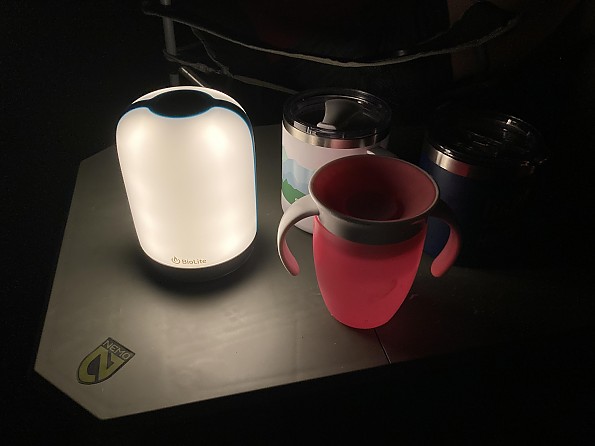
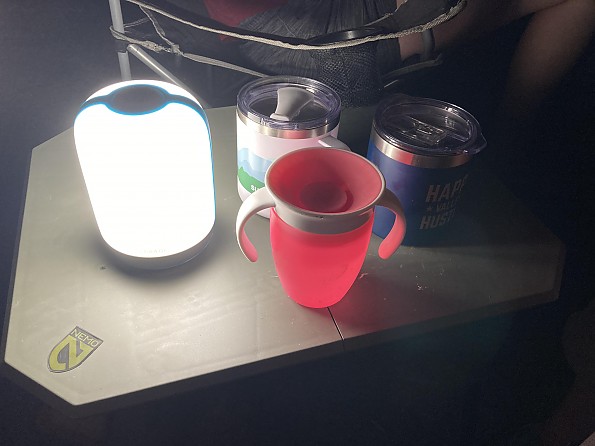
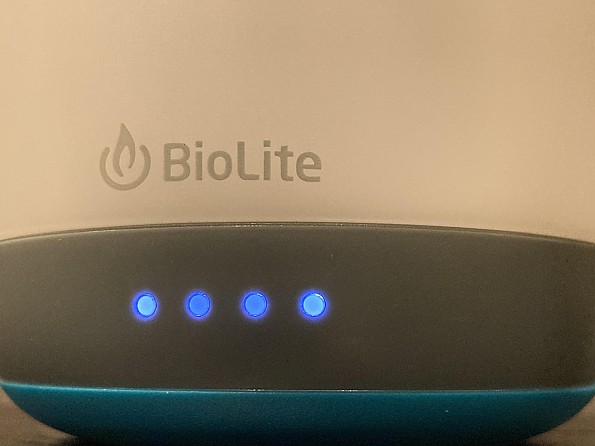
Power Source:
A standard USB-A to micro USB-C cord recharges the 6400 mAh battery. I have several of these kinds of cords in my electronics drawer, as they’ve become fairly ubiquitous with today’s rechargeable battery gadgets, and if I need a new one while on a trip, they are easy to find and generally less than $10. However, some believe the USB-A will be slowly phased out, so some of this tech may become obsolete in the future, although I suspect that will take a while, and adapters will always exist, so I’m not too concerned about it.
To charge the battery from dead to full, as shown on the battery life indicator, takes a few hours (3 hours is the manufacturer’s claim and that seems to be a fair estimate based on my testing). While this wouldn’t be ideal if needing to charge it in an emergency, I’ve never found the charge time to be burdensome.
As for using it as a power source itself to charge other items off of it, I've only done so twice, both times to charge a cell phone. Easy to do and didn't take as long as I had anticipated. It's hard to tell exactly how much "juice" it took from the battery, but both times it was on the last day of a weekend camping trip, so I wasn't worried about losing battery life off the light.

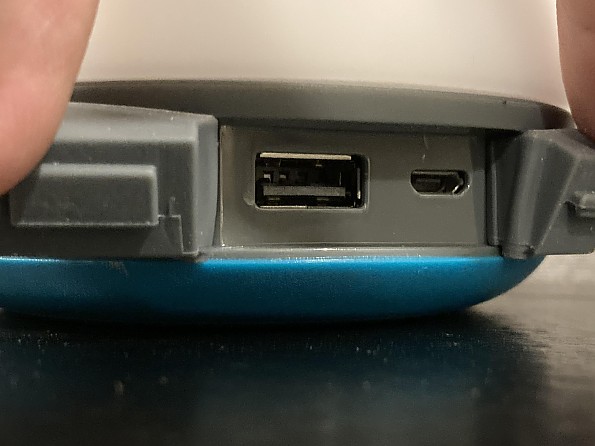
Ease of Use:
At first, the variety of color options and secondary colors/modes seemed a little overwhelming. I couldn’t always figure out how to get the color or light mode I wanted. Then I stopped and actually read the instructions, practiced a few times, and haven’t had any issues since. All that to say, read the instructions and you’ll get the hang of it in no time. Don’t read the instructions and you’ll be fussing with it for a while. It’s up to you!
The button is easy enough for my two-year-old daughter to push on and off, but she hasn't mastered the various colors yet. When she wants a different color, she brings the light over to me for some help.
Here's a basic rundown of how to operate the various lights (more details below in the "Modes" section of the review).
- Click the power button in rapid succession to navigate through the four main light options (cool white, warm white, single color, and multicolor).
- Stop on the preferred color mode of your choice and you have three options.
- Option 1: Hold the power button to make it brighter or dimmer.
- Option 2: Leave it the way it is.
- Option 3: Shake the lantern and it'll move into the secondary (or tertiary for multicolor) mode.
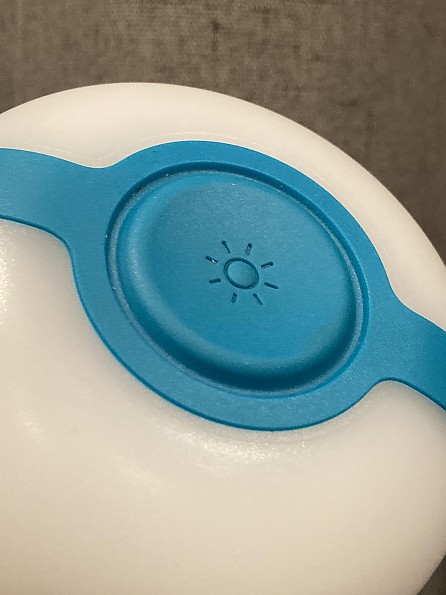
Weather and Water Resistance:
The unit is rated to IPX4 water resistance, which equates to being able to withstand rain and splashing, but shouldn’t be submerged. Mine has gotten splashed here and there a few times, and endured a little rain for 20 minutes or so, but that’s about it. As for withstanding cold temps, the manufacturer claims it can be operated in temps ranging from 104°F (40°C) to -4°F (-20°C). However, it should be charged and stored at temps above freezing.
Stand or Hang?
The base of the AlpenGlow 500 is sturdy enough to not get tipped over easily. The bottom side of the base also features a foldable hook that, when needed, can easily be unfolded, flipped upside down, and hung for overhead lighting. The nice part flipping it “upside down” to hang it is that the power button then is on the bottom, making it easier to reach up and power on/off. I’ve used the hanging hook only in two circumstances, in tents and at campsites hanging on a simple string clothesline, and both times it was useful.
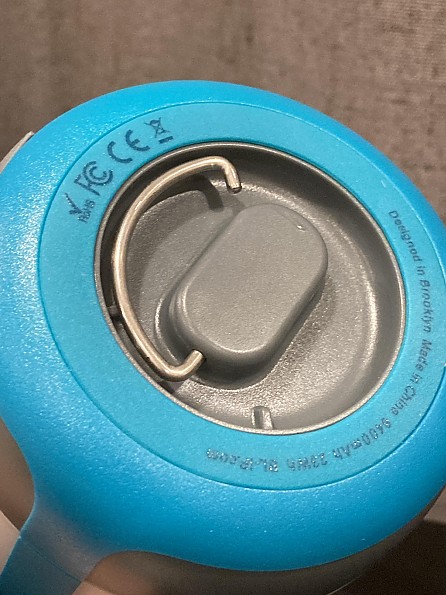

Modes:
The AlpenGlow 500 has modes galore! Instead of trying to explain them all, here’s a nifty little graphic, courtesy of BioLite's website.

In regards to what modes I’ve actually used, I’d say 50% has been solid warm color, 30% has been single-sided cool color, and 20% has been a combination of multicolor, multicolor party, and multicolor fireworks (my daughter’s personal favorite).
The solid warm is perfect dimmed down for a relaxed lantern bright enough to read by or make an evening snack, the single-sided cool color is great when lying beside someone and one of you is trying to read but the other is trying to sleep, and the variations of the multicolor mode are just fun and fascinating to watch.
The only mode that I’ve found to be lackluster is the warm candle mode. The “flickering” of the candle is too choppy and erratic to have any kind of calming effect. It kind of makes me sick. I’d much prefer the secondary mode for the warm color to match that of the one-sided cool color. A one-sided warm would be ideal for trying to fall asleep without waking up your sleeping partner.
And if you're wondering what it means to "shake" the light to move into the secondary mode, it's just what it sounds like. A good shake will change the mode. Typically, it won't occur by just walking with it...it has to be a deliberate shake to move into the secondary mode.
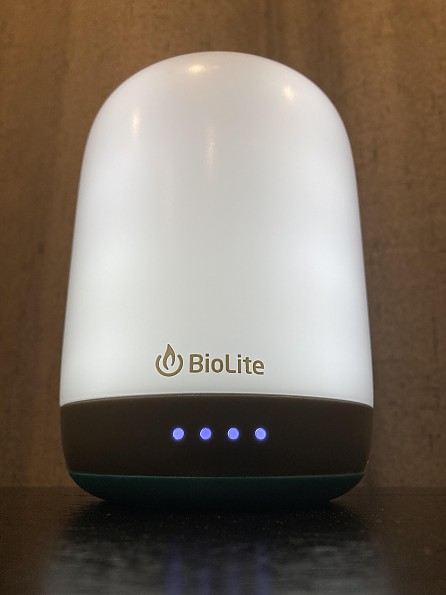
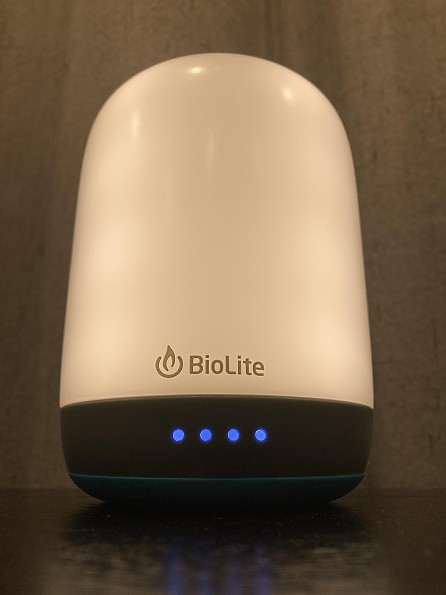

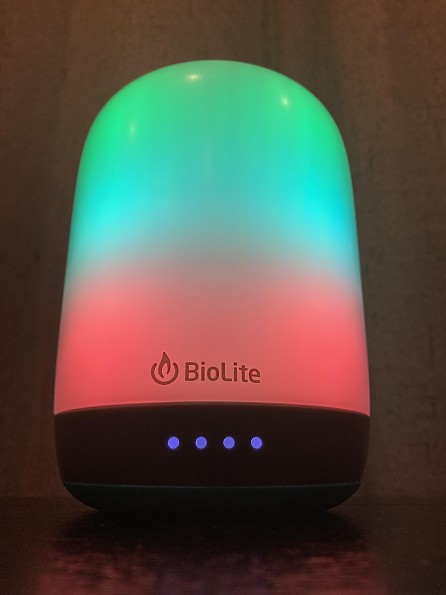
Construction & Durability:
The AlpenGlow 500 lantern is far more durable than my initial assumption would have been, given that it’s made of plastic. I thought my nearly 2-year-old daughter, who has claimed the lantern to be hers, would have it cracked or broken in no time, but that hasn’t been the case. She regularly plays with the lantern, and even has it sitting on her bedside table most nights, but after a couple months of regular use from both parents and child, the AlpenGlow lantern shows absolutely no signs of wear and tear. I wish I could say the same for most of her other toys.
Best For:
The BioLite AlpenGlow is an incredibly handy lantern that is great in a variety of settings including car-camping (inside or outside of the tent), RVing, multi-day canoe trips, backyard cookouts, evening hammock hangs, and even as an everyday bedside lantern for toddlers.
Other Options:
In addition to the 500 lumens option, the BioLite AlpenGlow also is available in a smaller 250 lumens option, that has many, but not quite all, of the same color options.

Background
From propane lanterns to LEDs, I typically bring an area light with me while camping with a group or with the family. Prior to this, I've never used a BioLite product before, but after nearly three months of use, found the BioLantern to be high-quality and much more than an ordinary lantern.
Source: received for testing via the Trailspace Review Corps
(Sample for testing and review provided by BioLite)
Your Review
Where to Buy
You May Like
Specs
| high | low | ||
|---|---|---|---|
| Price |
MSRP: $79.95 Current Retail: $79.95 Historic Range: $55.97-$139.90 |
||
| Weight |
13.4 oz / 380 g |
||
| Lumens | 500 lm | 5 lm | |
| Burn Time | 5 hours | up to 200 hours | |
|
1 hour reserve power |
|||
| Water Resistance |
IPX4 |
||
| Color Rendering |
ChromaReal broad spectrum LED (CRI 90) |
||
| Dimensions |
5.4 x 3.8 in / 136 x 97mm |
||
| Battery |
6,400 mAh (23.6 Wh) Li-Ion |
||
| Charge Time |
3 hrs by 5V/2A micro USB |
||
| Inputs |
Micro USB |
||
| Outputs |
1x USB A, 5V / 2.4A |
||
| Standard Modes |
Cool White, Warm White, Single Color, Multicolor |
||
| Secondary Modes |
Single Side Light, Candle Flicker, 1-Color Cycling, Multicolor Party |
||
| Tertiary Modes |
Fireworks |
||



